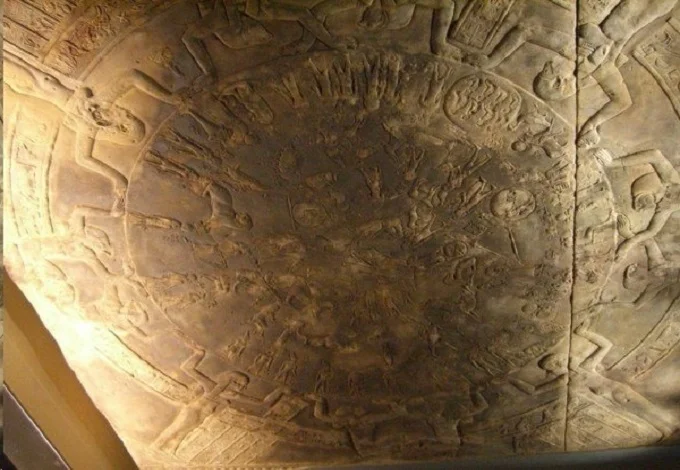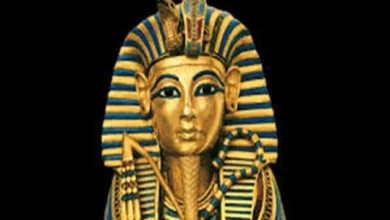Ancient Egyptian zodiac: The Dendera zodiac

Not only has the history and culture of ancient Egypt piqued the curiosity of historians and archaeologists from different parts of the globe for many centuries, but it has also piqued the interest of astrologers. The cause for such intrigue is a mysterious old diagram of the zodiac that was made by the people of Dendera, which is a city that is situated around 60 kilometers north of Luxor. This diagram has not yet been explained. What is the secret behind the ancient Egyptians’ ability to predict the future?
To begin, it is important to point out that the depictions of the zodiac in ancient Egypt had a somewhat unique quality compared to what was typical, for instance, in Europe. This is something that should be taken into consideration. On the walls and ceilings of the tombs, where they placed the corpse of the Pharaoh together with all of the traits that he would need in the afterlife, ancient Egyptian zodiac signs were painted on the walls and ceilings. More than a hundred distinct astrological drawings have been gathered throughout the course of the years that this funeral ceremony has been performed. The one that is the most ancient was created in the fourth century BC.
There have been two different paintings of the zodiac found at Dendera; one is “circular,” while the other is “long”. They were found in the year 1798, during the conquest of Napoleon Bonaparte, who had a custom of not only bringing an army of troops but also a group of scientists and researchers with him on his expeditions.
The “round” zodiac, in contrast to the “long” zodiac, was not like the normal drawings and paintings that the Egyptians had, which is why the “round” zodiac was the one that academics were more interested in. It more closely resembled a horoscope or a chart of the night sky, neither of which connected in any way to the way that the general people saw the culture of Ancient Egypt.
The tale behind the discovery was not an easy one to piece together. In the year 1802, researchers did not have the courage to touch the antique artwork, so they instead created an engraving that faithfully reproduced the painting’s subject matter as well as its minute elements.
Later, in 1820, the antique dealer Claude Lelorrain did the unthinkable: he broke out the stone with the engraving and delivered it directly to Paris. There, the original engraving served as a decoration of the ceiling of the Royal Library for one hundred years, after which it was exhibited in the Louvre. Meanwhile, in its place in the tomb of the Dendera temple, there was only a copy of the engraving. Additionally, the “long” Dendera zodiac remains at that location.
The fact that the “round” zodiac is made up of two circles, one exterior and one inside, is one of its most distinguishing characteristics. Within the inner circle is a carved astrological chart, while the outside circle depicts four goddesses with their hands on the inner circle, holding it with their fingers. On it, you can make out each of the planets in our solar system, in addition to the Moon and our own planet.
On the edge of the inner circle are the constellations that correspond to the locations of the planets in our solar system: Saturn is in Virgo, Jupiter is in Cancer, Mars is in Capricorn, Venus is in Aries, Mercury is between Aquarius and Pisces, the Sun is between Pisces and Aries, and the Moon is near the Sun. The outer circle is a representation of the sky as seen from Earth. This kind of outline brings to mind horoscopes from the middle ages in a striking way.
The planets that make up the “long” zodiac are shown as figures that are supported by staff and are grouped in five rows. Stars are used to indicate the locations of the planet-figures in the sky that are visible to the unaided human eye. Among them is a big depiction of the goddess Nut, the wife of the deity Ra, who is shown as splitting the top from the bottom, which represents heaven and Earth. Even though the “long” zodiac seems to be less organized, the pictures of the planets are still related to the constellations. For example, Mars is located between Pisces and Aquarius, and the Moon is located between Libra and Scorpio in the “long” zodiac.
On the one hand, it would be feasible to compute from these places the year and day to which a certain constellation or celestial body belonged in order to decode the ancient Egyptian horoscope and compare it with its more recent equivalents.
The identification of the icon that best represents each planet by the scientific community has not presented too much of a challenge. However, nobody has been able to determine the exact dates that the zodiac signs were referring to. In order to do this, it is vital to ascertain the exact date on which the temple was built, since here is where the carvings were discovered. The predecessors of Egyptology thought that the year 50 BC had passed.
However, in subsequent times a great number of other viewpoints emerged, each of which suggested a different starting point for the reckoning of the age at which the ancient horoscope is said to have been in existence. The building of the temple was dated to the hundredth year of our period, which was 2500 BC. It was much farther back in antiquity than that, to the days when Venus was known as Sirius, and the North Star was known as Alpha Dragon.
It seems already difficult to comprehend the thoughts and the concept of counting the signs of the zodiac according to how the ancient Egyptians conceived of it because of the wide variety of perspectives that are held in today’s society. Their contemporary descendants have just one thing to do, and that is to enjoy the extremely creative feats of ancient Egyptian astrologers, which are shown in the carvings of the ancient temple of Dendera.




